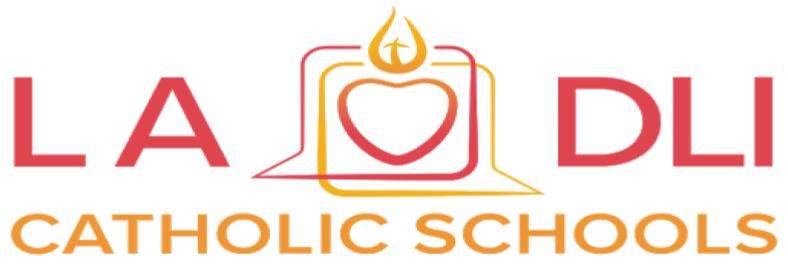What is Dual Language Immersion (DLI)?
Dual Language Immersion (DLI) is a model of education in which students matriculate through grades TK (or even pre-school) through grade 8 learning content in two languages, English and a Partner Language (e.g. Spanish, Mandarin). Students also experience daily prayers, Masses, celebrations, and performances in both languages. In the early grades, students explore their world guided by teachers using two languages. As they grow, students are taught academic subjects in both English and a partner language. For example, students study math in Spanish while learning history in English.
Why Dual Language Immersion programs?
This particular school model operates on an additive perspective not a deficit. It recognizes that children come to us with language, and just because they may not know English yet, doesn’t mean they start out with a deficit. On the contrary, as mentioned by the National Literacy Panel and the Center for Research on Education, Diversity, and Excellence, these students need to fully develop their native language, have the opportunity to build strong literacy skills so that they can then more successfully acquire their second language. You may be asking well what about students who only speak English and are enrolled in these school models? Research shows that these students continue to show academic gains without a detriment to English.
What are the goals for the Program?
The goals of dual language immersion is bilingualism, biliteracy and biculturalism. In other words by the time students graduate from Sacred Heart’s dual language immersion program they will be able to listen, speak, read, write and learn academic content in both languages. They will equally learn to embrace differences because this model celebrates exactly this, cultural and language.
What if I don’t know the language?
One of the main concerns for parents in a dual language immersion program is how will I be able to help my child if I don’t know the language? One way that we plan on addressing this concern is that teachers will send a weekly newsletter regarding overarching topics students will be viewing in class. This will include items that will help you engage your child in conversations and ask questions. However, a large part of enrolling in this program is being confident that your child will learn independently of you. Encourage your child to go to class a couple of minutes before school to ask the teacher for help. If they are too young or shy accompany them to ask the teacher for help, eventually they will be asking without your help. This will guide them into becoming independent learners and empower them to take charge of their learning. Also, use other parents in your child’s class as a resource.
What language should I speak to my child in at home?
Speak to your child in the language you feel most comfortable in and read, read, read in that language. Research from the National Literacy Panel and the Center for Research, Education, Diversity and Excellence suggest that students learn their second language best when they have strong literacy skills in their native language. That means that by helping them with their English, you are indeed helping them with their Spanish!
Benefits of a Dual Language Immersion Education
- Students feel an increased sense of global citizenship
- Bilingual abilities have shown to delay the effects of Alzheimer’s
- Dual Language students have a competitive edge in schools and outperform English-only learners
- Improved executive brain functions such as focus, planning and creativity
- Multilingual speakers have more job opportunities and earn more over their lifetime
- Employers and colleges choose multilingual speakers over equally qualified monolingual speakers
- Opportunity to earn foreign language college credit early and save money on tuition
- Improved brain power for cognitive and critical thinking
- Increased connection to family history and values
- Incredible ability to appreciate and communicate inter-culturally

